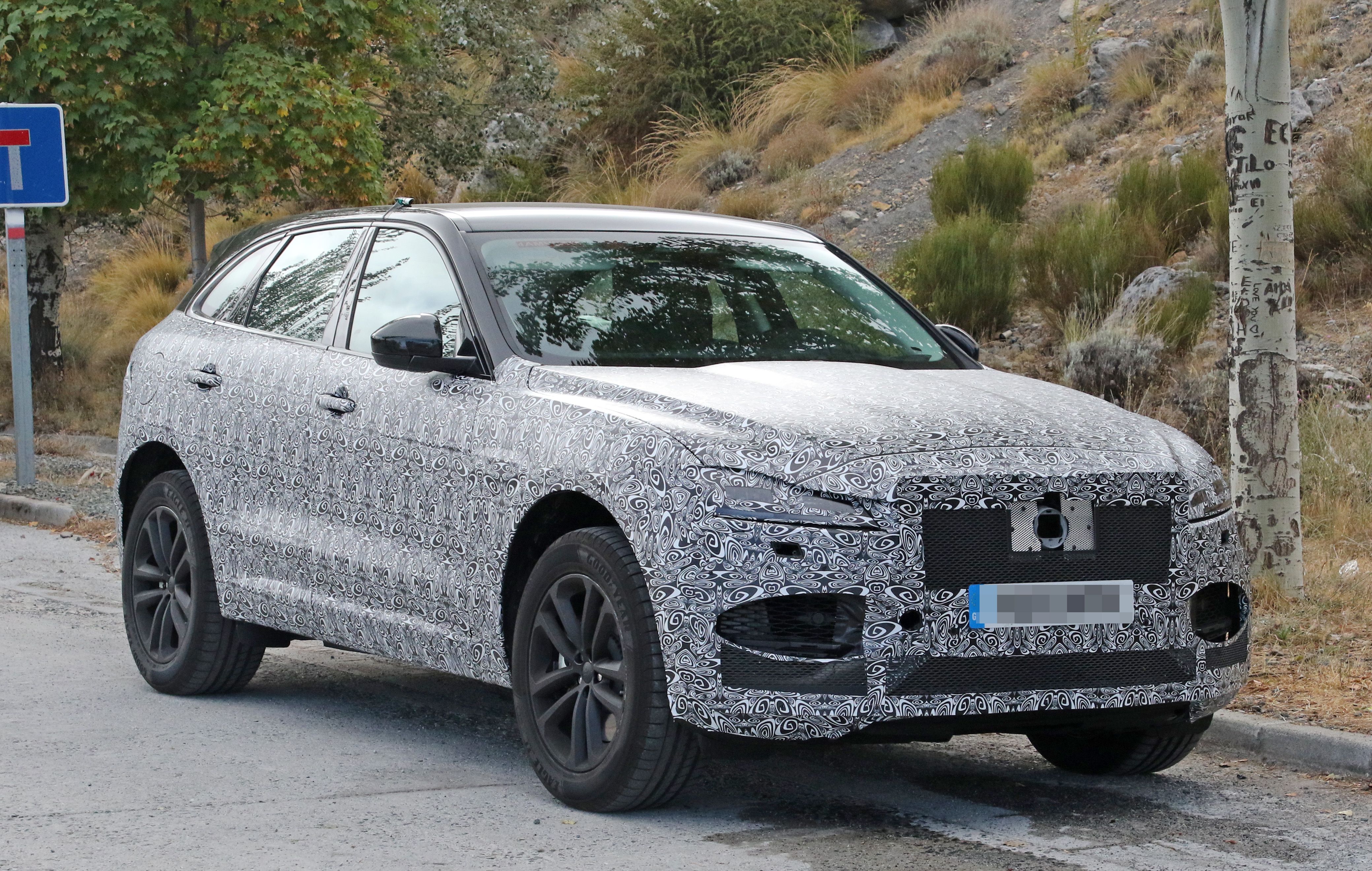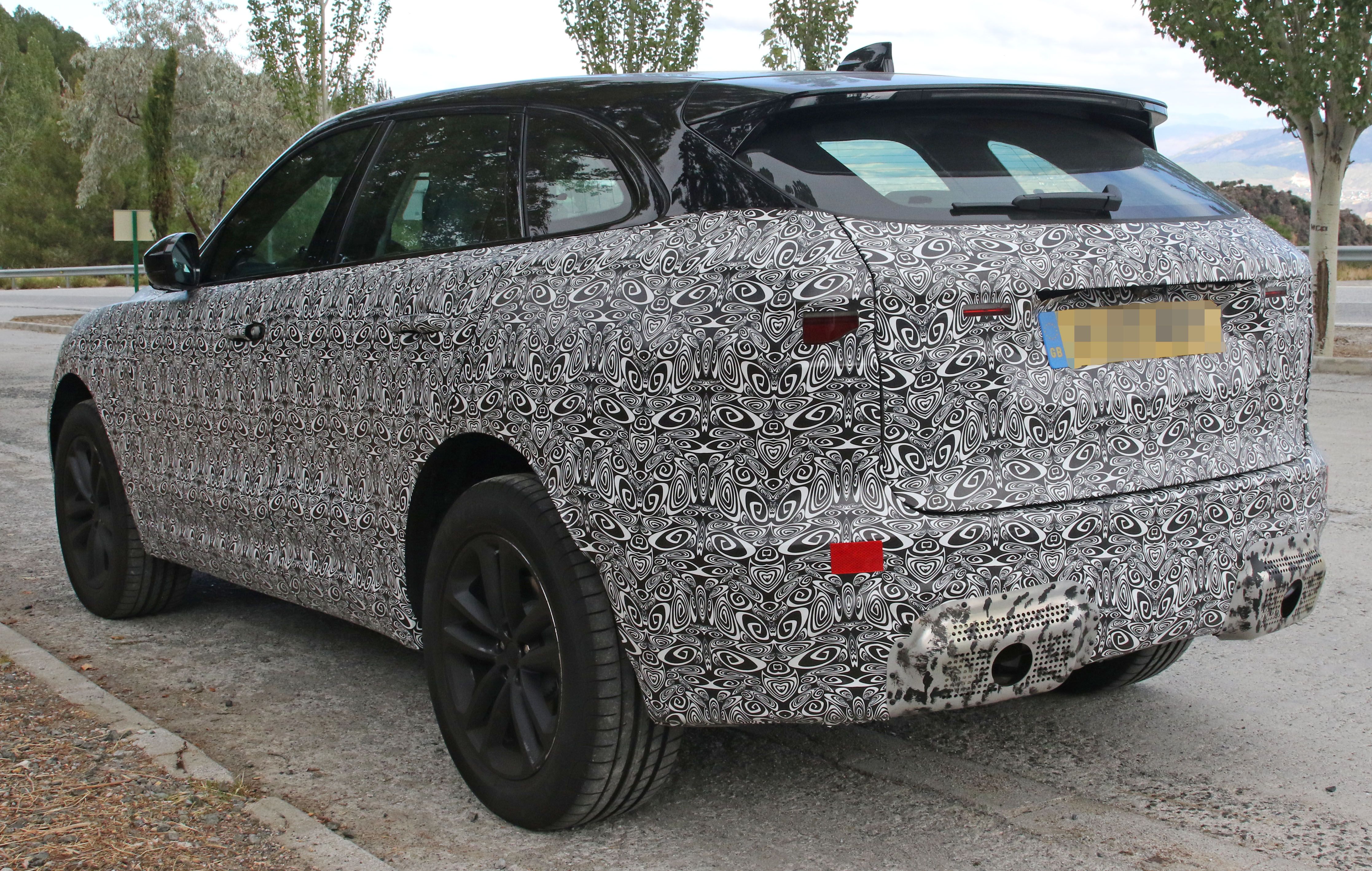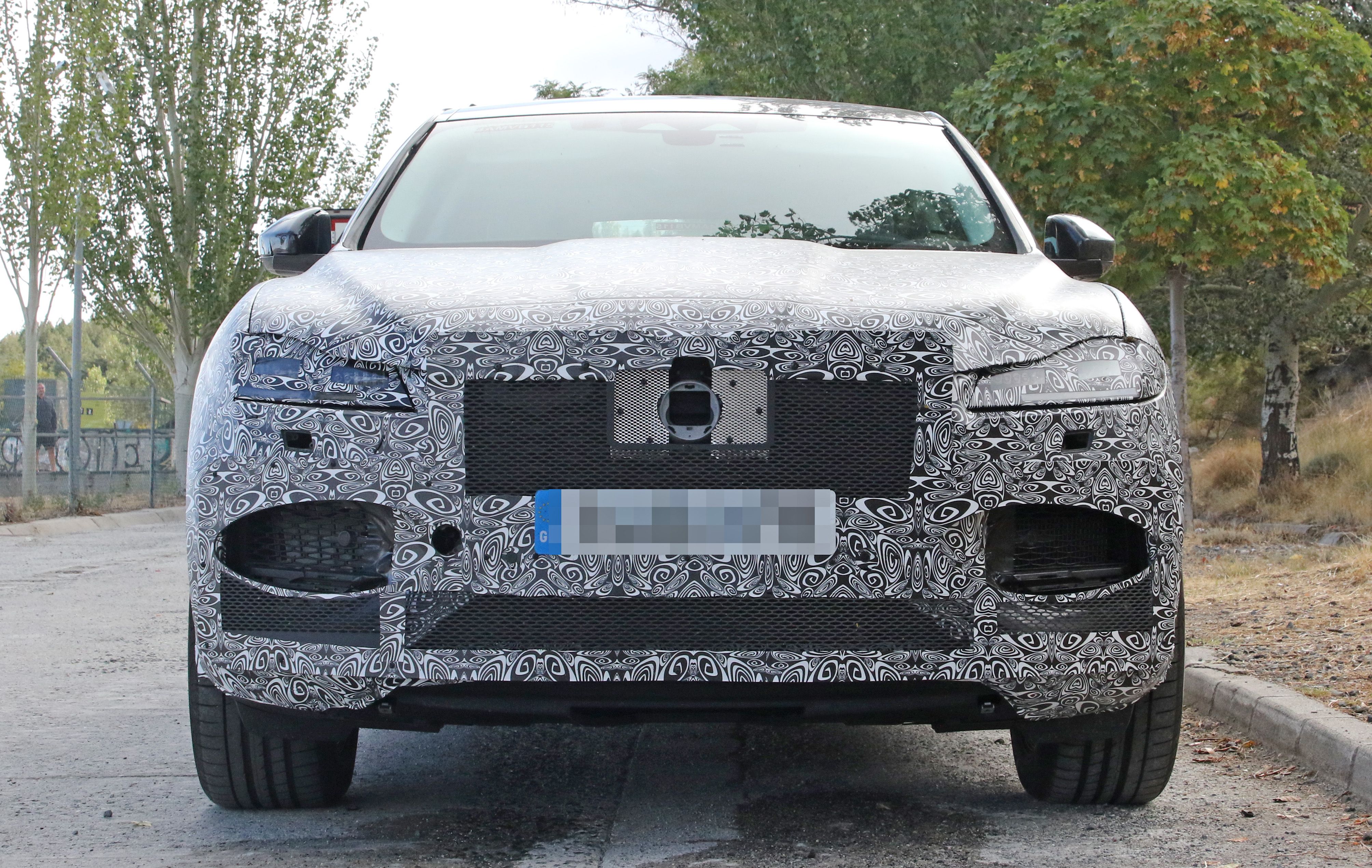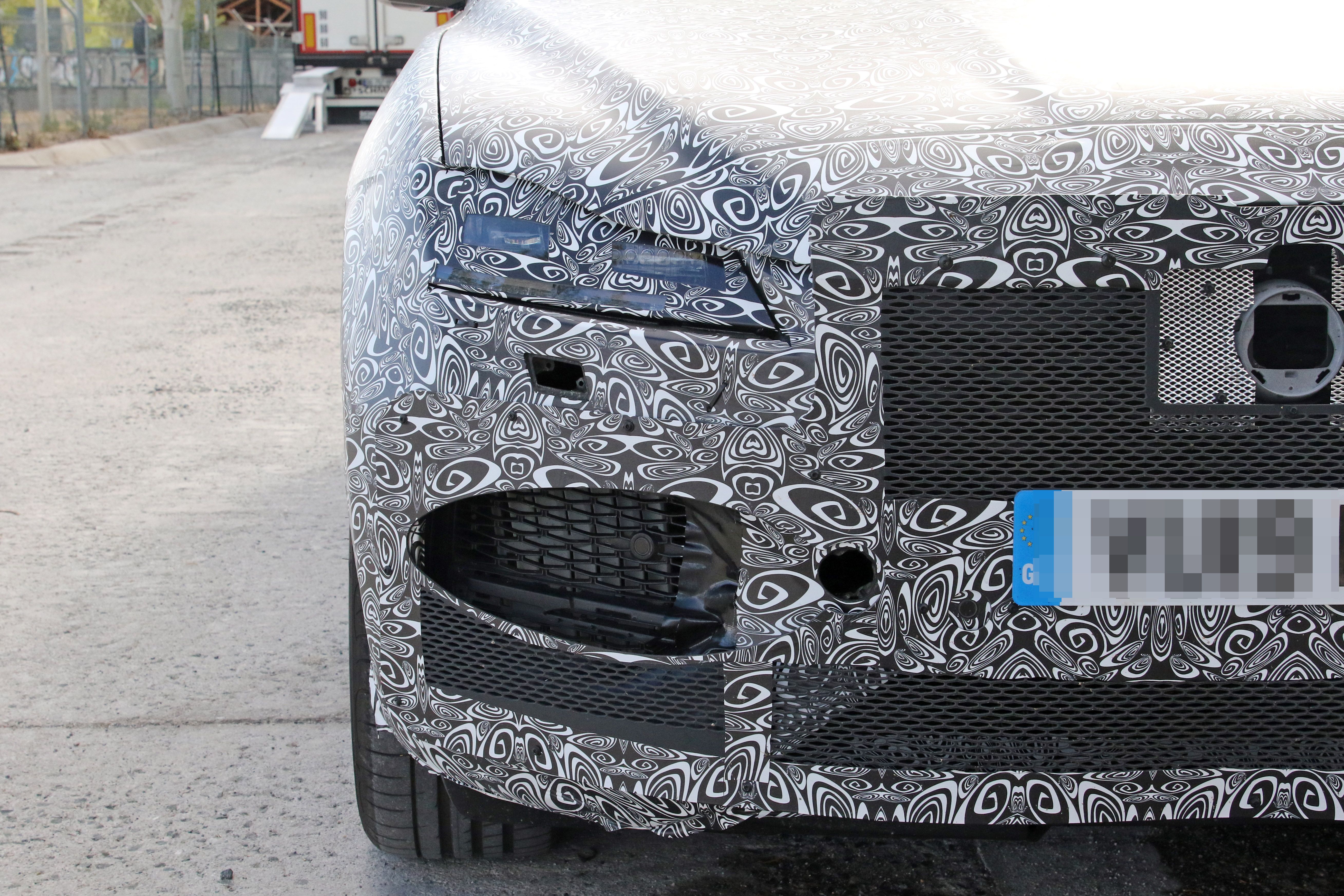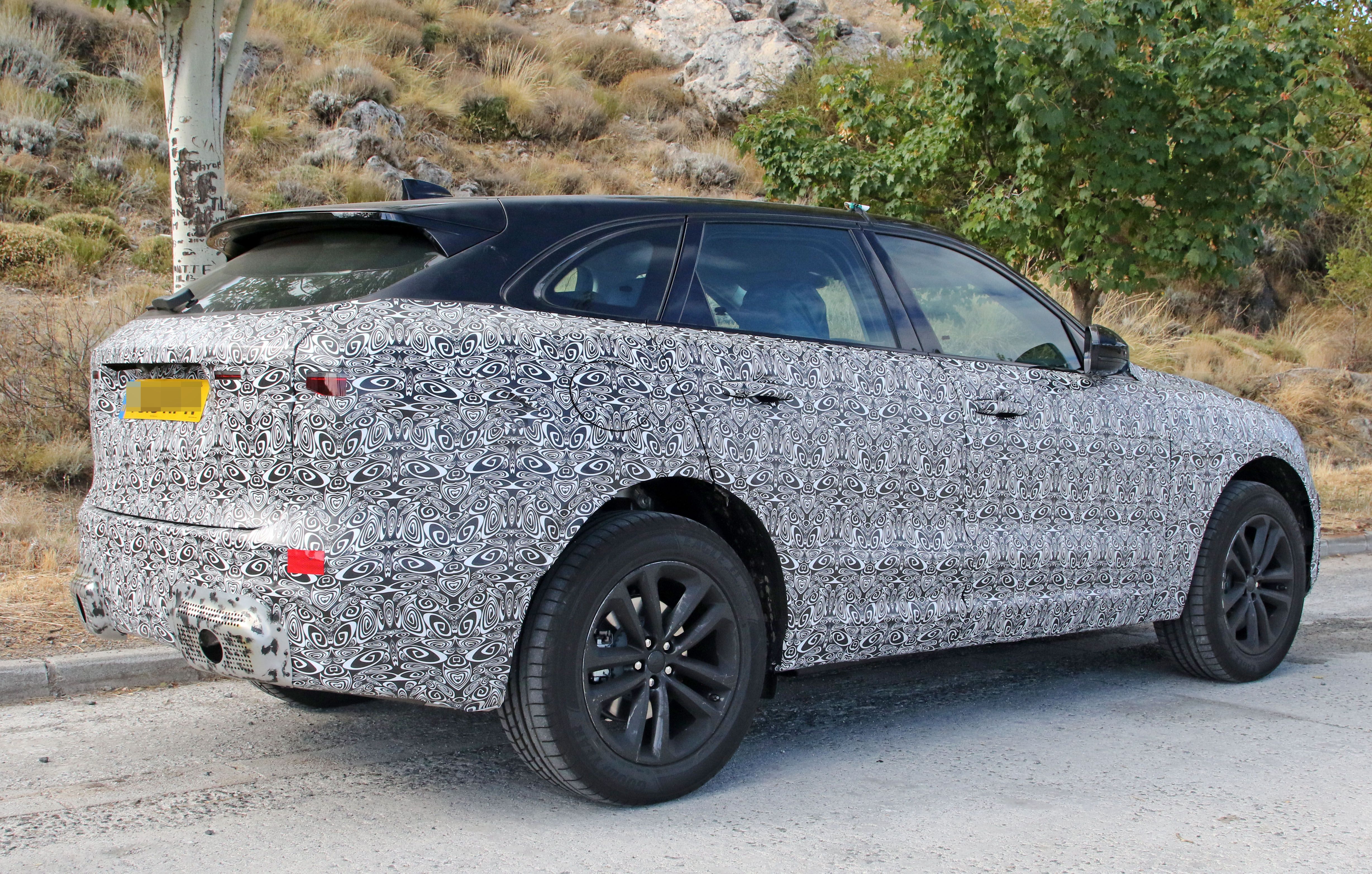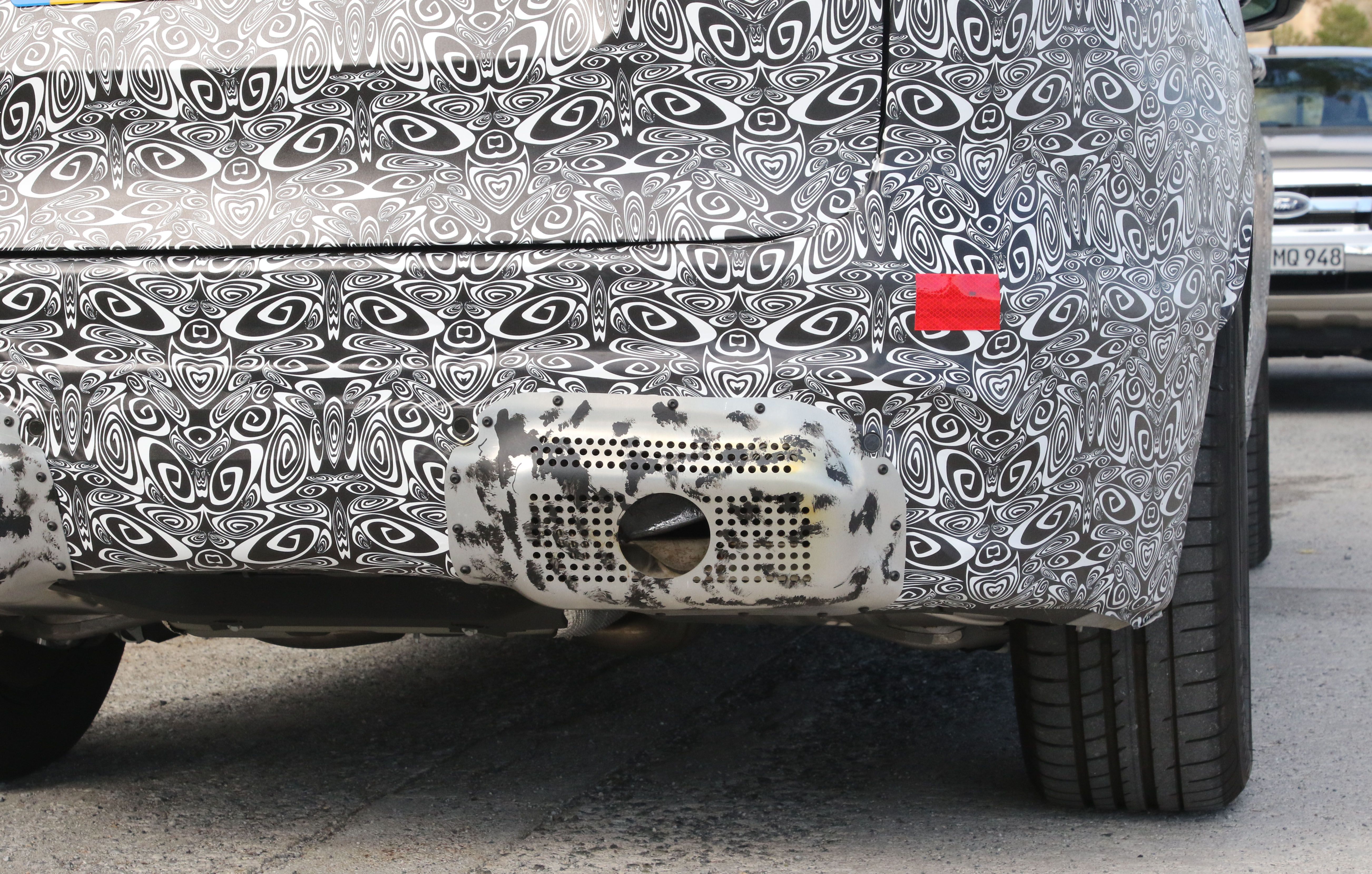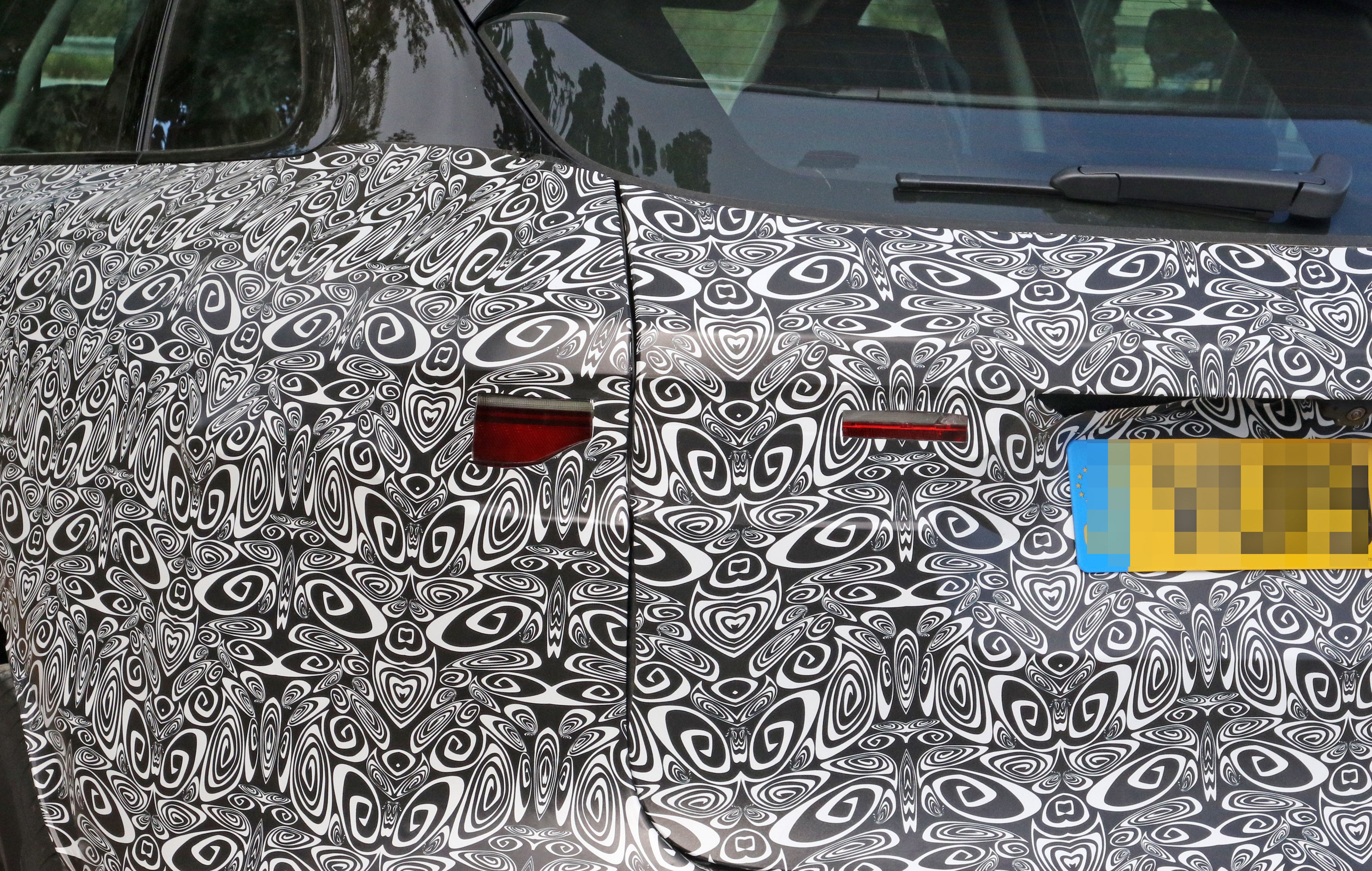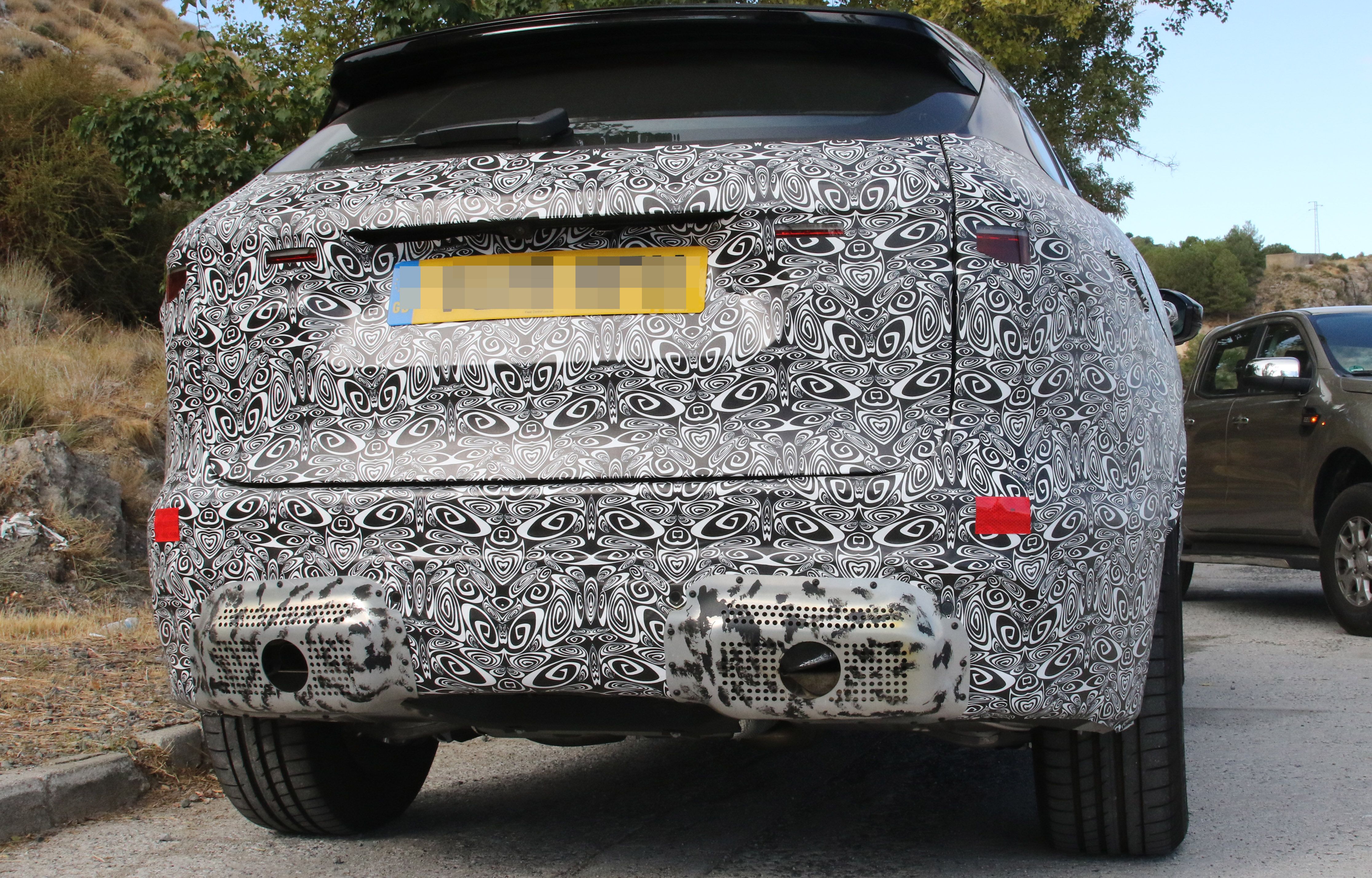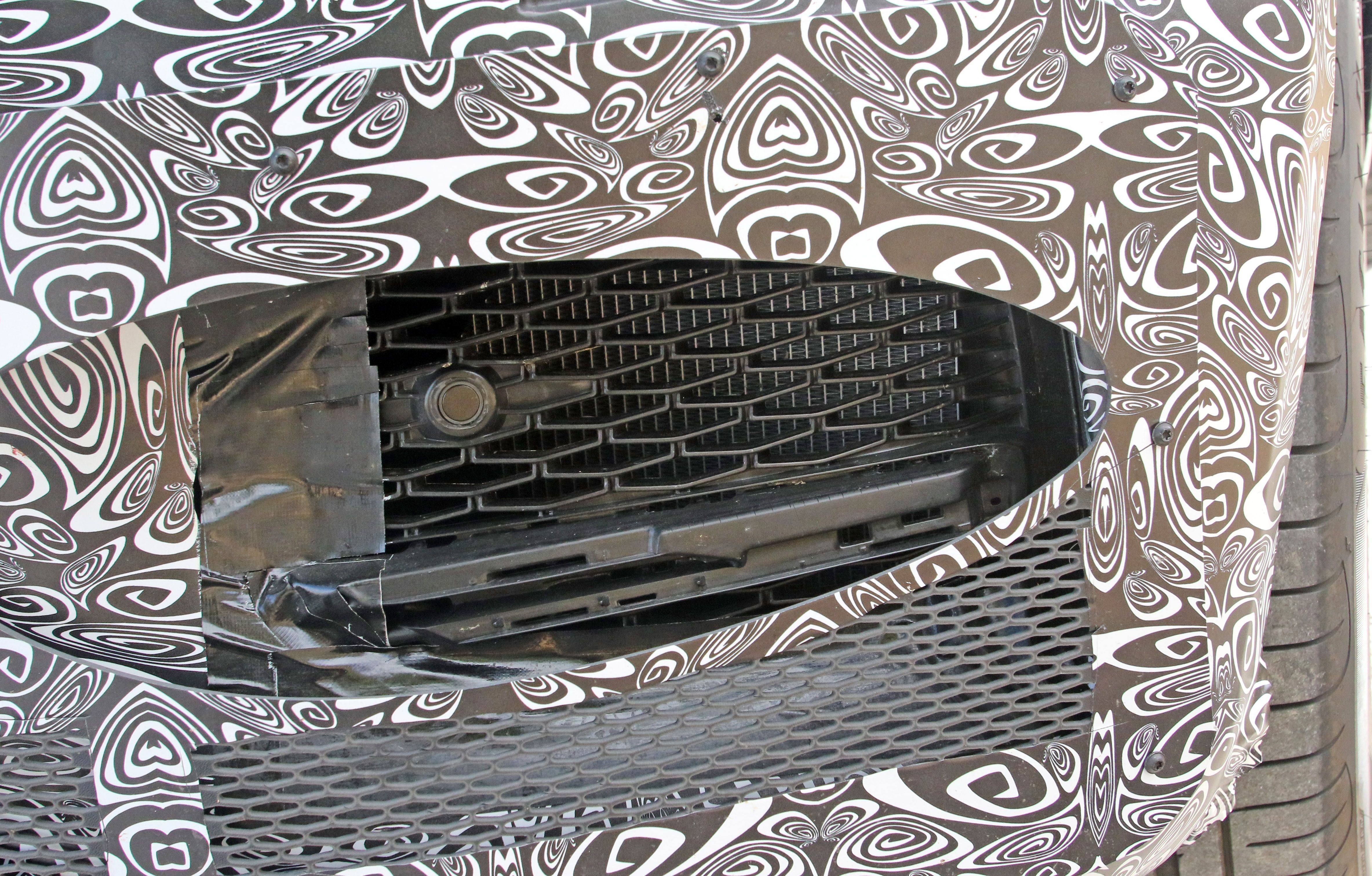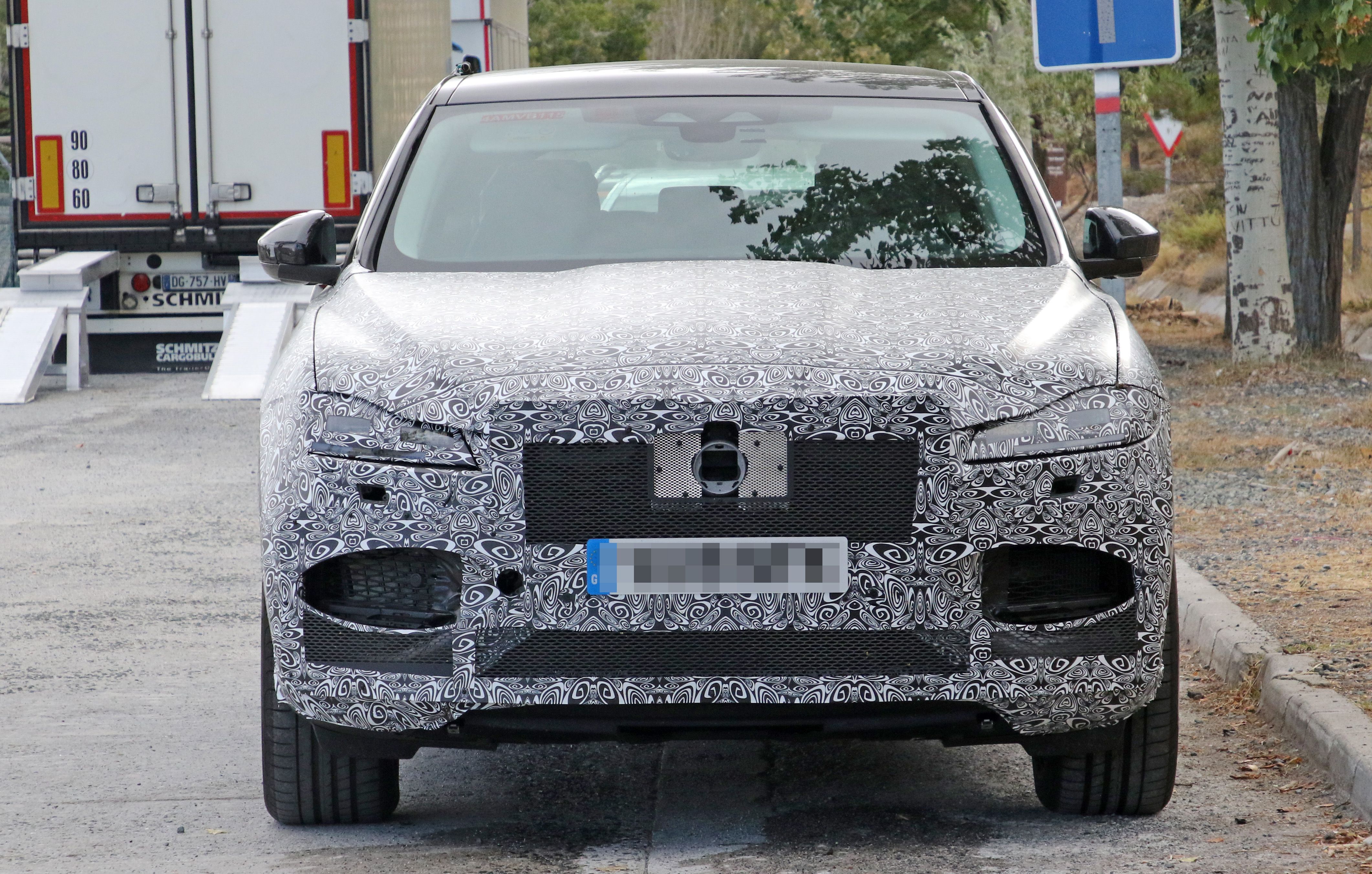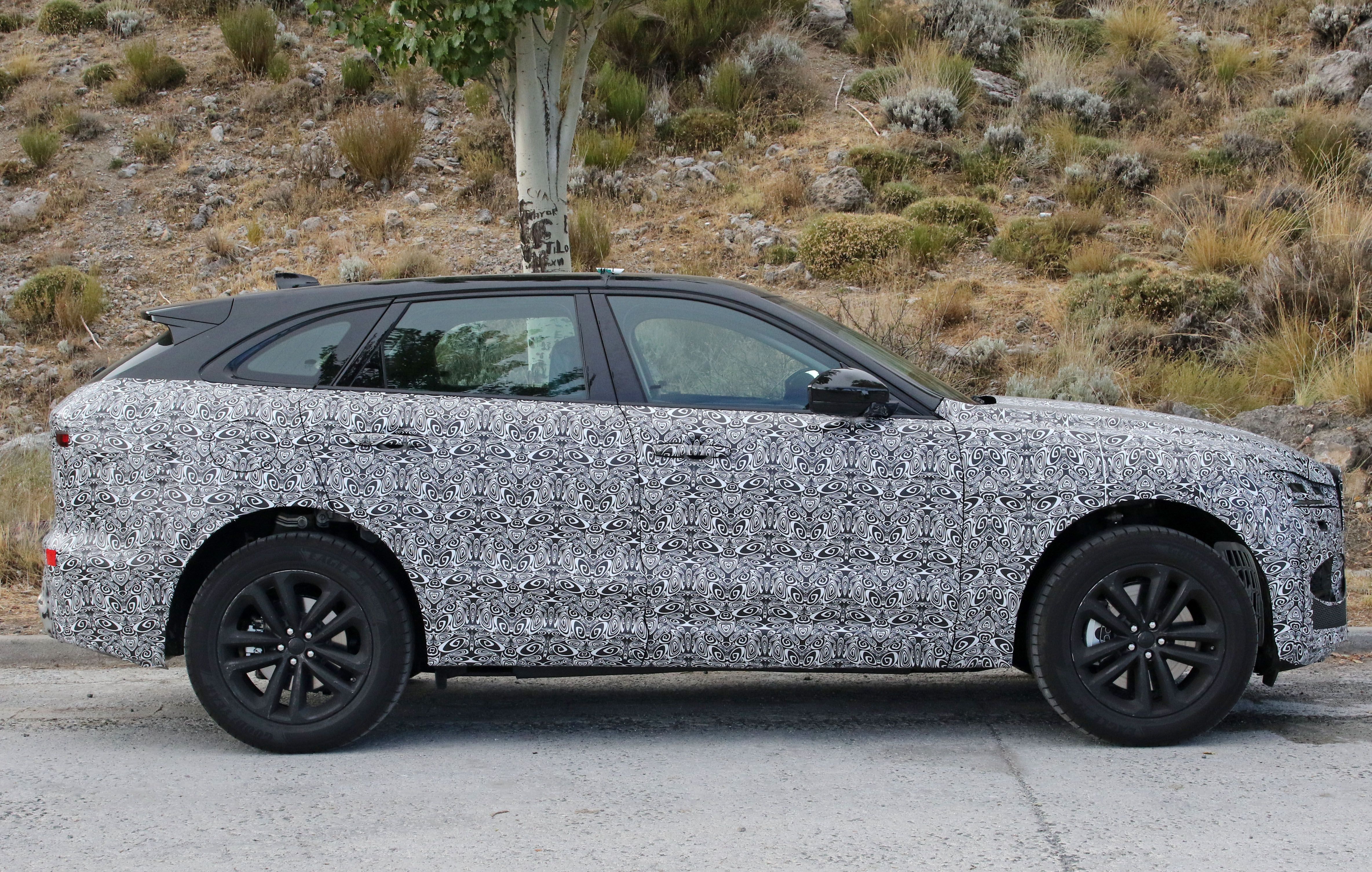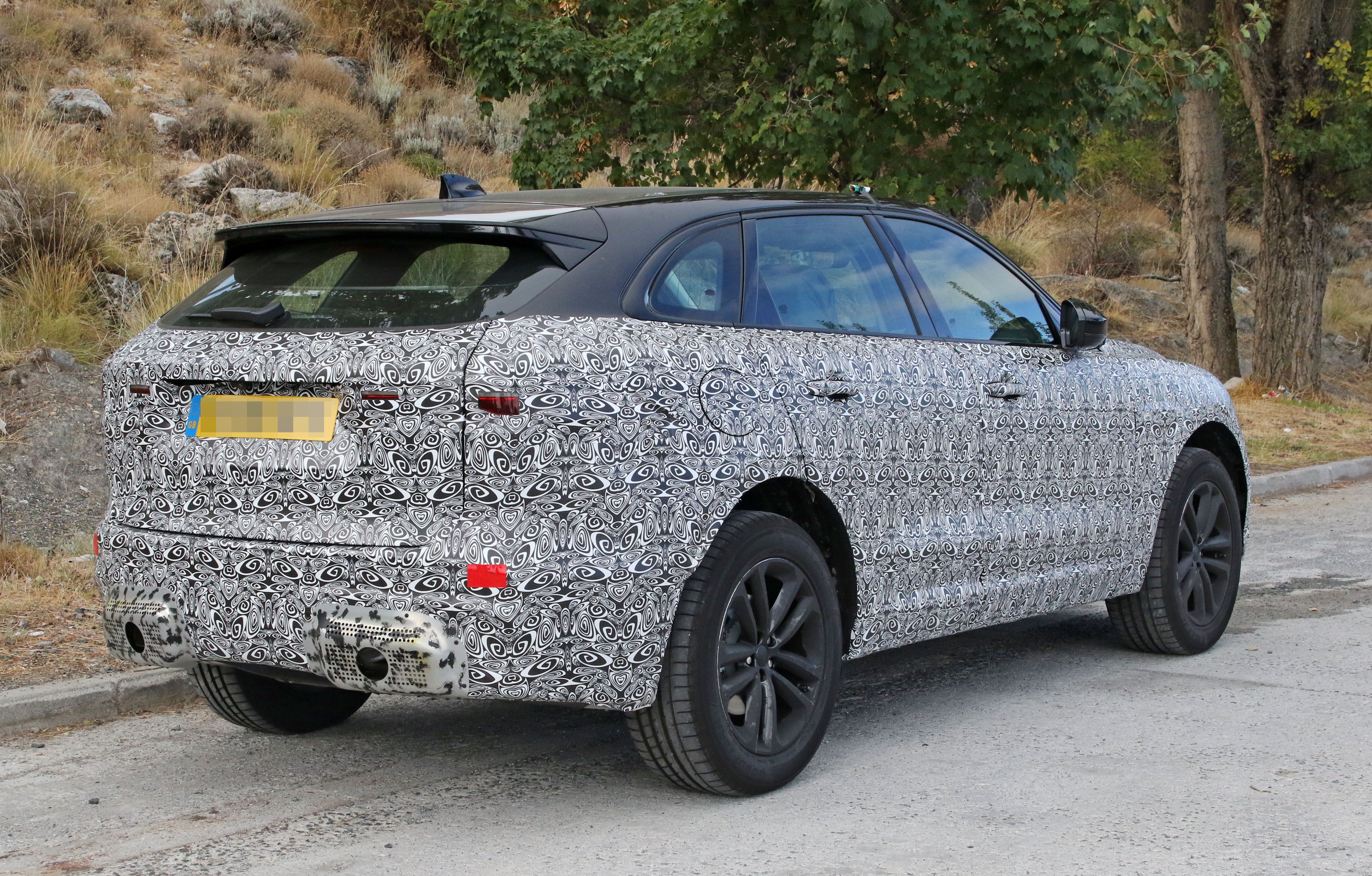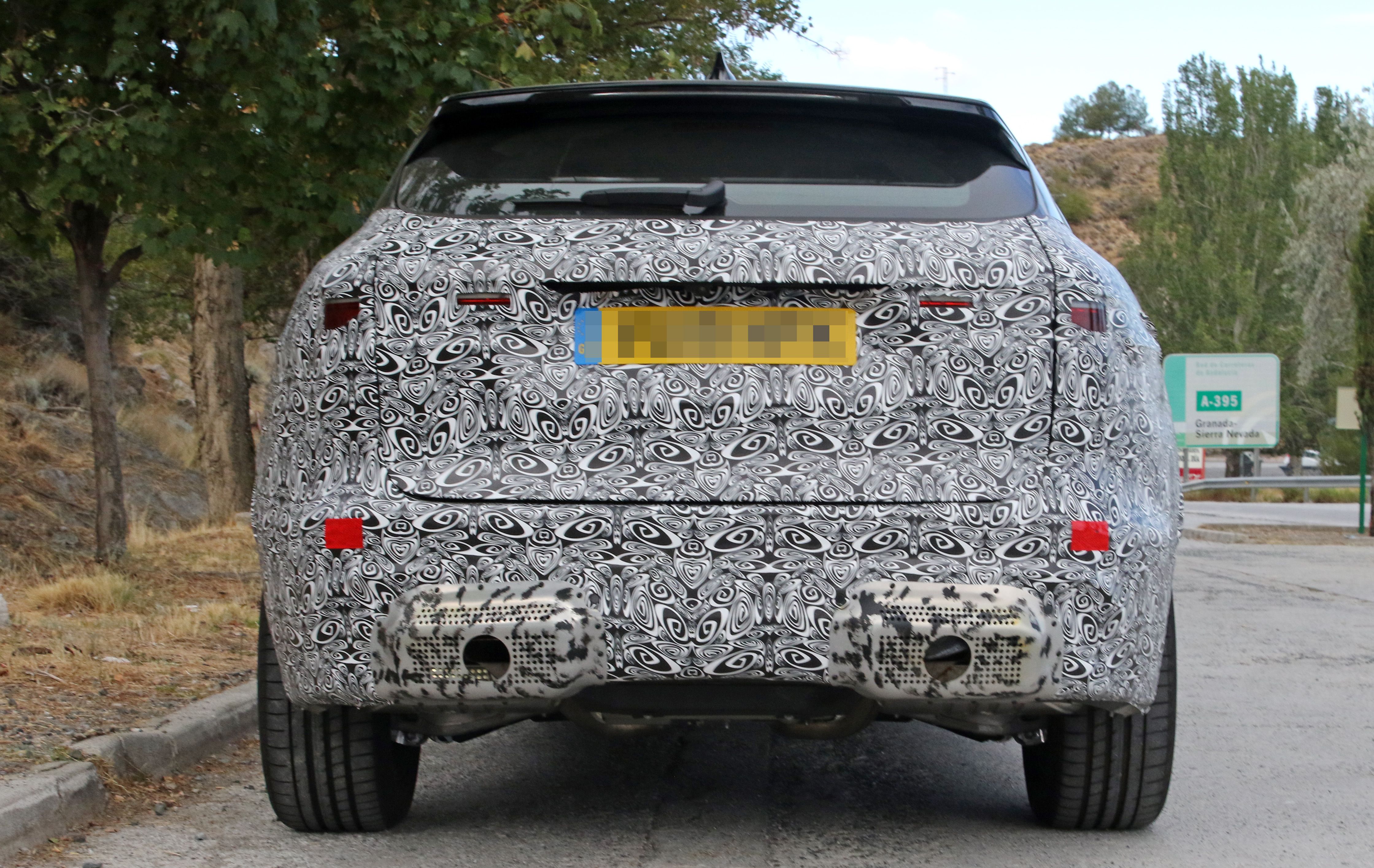The Jaguar F-Pace arrived late to the SUV/crossover party. With it, the Indian-owned British carmaker had the intent of crashing the said party, but things didn’t quite go as planned. Although zippy on the asphalt and rather spacious, the F-Pace found it difficult to break the BMW-Mercedes-Audi-Porsche quartet: BMW has the spirited driving baked into every SUV it churns out, Mercedes-Benz relies heavily on comfort and plushness, while Audi ticks the material quality and hi-tech design boxes first and foremost, and Porsche kind of has everything. The Volvo XC60 is also lurking around, as is the Range Rover Velar. Yet a new set of spy shots hints at a redesigned F-Pace. Has Jaguar learned its lesson? Stick with us to find out.
2020 Jaguar F-Pace
- Make: Array
- Model: 2020 Jaguar F-Pace
- [do not use] Vehicle Model: Array
Exterior
Let’s get something straight right off the bat. The Jaguar F-Pace is a nice car to look at.
Unfortunately, the heavy-camouflaged test mules spotted by our spy photographers are not that talkative, so there’s nothing we can actually speculate on at this point, except the fact that in using so much psychedelic foil to cover the SUV’s metal, Jaguar suggests it will change a lot about the exterior, including the light cluster design both in the front and in the rear (even the exhaust pipes are covered in camo material, so there’s that as well).
As far as we can tell, the glass surface on the F-Pace will remain unchanged - the sloping roofline will still be sloping, and the rear window retains the initial narrow, helmet visor-like shape. Who knows, maybe the F-Pace’s muscular body will get a couple of new creases and edges, but we’ll have to wait for Jaguar to officially announce the revamped version to get a clear answer on that.
The facelifted version of the F-Pace will still sit on Jaguar Land Rover’s Lightweight Aluminum Architecture, which means its exterior dimensions will be left alone; hence those short front overhangs will still hint at the SUV’s zippy nature on the road, and the beefy hood will still throne on top of the bold grille. It’s also highly likely that the F-Pace will retain is 0.34 drag coefficient.
Size-wise, the current F-Pace is 4,731 millimeters (186.3 inches) long, 1,666 millimeters (65.6 inches) high, and 2,175 millimeters (85.6 inches) wide with the side mirrors unfolded (2,071 millimeters/81.5 inches with the mirrors folded in). Its wheelbase stretches to 2,875 millimeters (113.1 inches), while the front overhang measures 834 millimeters and the rear one 1,023 millimeters (32.8 inches). Ground clearance is 161 millimeters (6.3 inches).
Interior
Inside the cabin, the F-Pace takes a lot after its sedan siblings, including the XE and XF.
We don’t know Jaguar’s plans regarding the quality of some materials inside the F-Pace’s cockpit, but we’d come up with plushier one in the lower areas of the cabin, specifically for the median tunnel that feels rough once your knee touches it and the center console itself, which doesn’t quite ooze luxury as you get to touch the harsh plastic that was used to shape its elements.
Those are pretty much our only, well, let’s call them desires. It’s also worth mentioning that the F-Pace’s cabin is an airy affair that also does a good job when it comes to ergonomics - from the driver’s seat is easy to reach every knob or button as it is to find a proper posture behind the wheel.
Nevertheless, the F-Pace’s cockpit isn’t just about fuelling your spirited driving sessions. Being an SUV, it has to tick all the boxes, including those next to space and practicality. Again, we’ve got nothing to complain about here - egress and ingress are a piece of cake, and there’s plenty of room around, and above every body part we can think of. But if it’s figures you want, know that in the front row of seats, headroom is 978 millimeters (37.8 inches). Those seated in the rear seat get 952 millimeters (37.5 inches) worth of headroom. At the same time, legroom in the front is 1,023 millimeters (40.3 inches) and 944 millimeters (37.2 inches) in the back. The F-Pace also offers a cargo area with a volume of 650 liters (that’s 22.9 cubic feet).
We’ve been telling you all this because the test mules our carparazzi spotted featured completely hidden interiors, so at this point, the best thing we can do is wait for Jaguar to do its thing and publish the first official interior photos of the nip-and-tucked F-Pace. Which, hopefully, will reveal a similar tech pack as the one offered by the I-Pace, including the dual-screen center stack and a crisper infotainment setup altogether.
Drivetrain
Up next is the F-Pace 25t, which makes use of a 2.0-liter Ingenium turbocharged inline-four gasoline-fed mill good for 247 horsepower at 5,500 rpm and 269 pound-feet of twist between 1,300 rpm and 4,500 rpm. The engine is bolted to the same eight-speed auto, which allows the F-Pace 25t to dispatch the 0-60 miles per hour interval in 6.6 seconds en route to a top speed of 135 miles per hour. Then there’s the F-Pace 30t, which uses a similar 2.0-liter mill, but this time tweaked to churn out 296 horsepower at 5,500 rpm and 295 pound-feet of torque between 1,500 rpm and 4,500 rpm. The 0 to 60 miles per hour sprint happens in 5.8 seconds, with top speed coming in at 145 miles per hour.
If those flavors of the F-Pace aren’t attractive enough, there’s the S model that packs a 3.0-liter supercharged V-6 that cranks out 380 horsepower at 6,500 rpm and 332 pound-feet of torque at 4,500 rpm.
Above the F-Pace S, at the very top of the food chain, sits the Jaguar F-Pace SVR. Moved by a 5.0-liter supercharged V-8, the SVR’s armory includes 550 horsepower unleashed in full between 6,000 rpm and 6,500 rpm and 502 pound-feet of twist unlocked in the 2,500 rpm - 5,500 rpm bracket. On paper, the Jaguar F-Pace SVR sprints from 0 to 60 miles per hour in 4.1 seconds and is good for a top speed of 176 miles per hour. Every F-Pace sold in the U.S. comes with all-wheel drive, but the SVR adds an electronic active rear differential.
That being said, we don’t expect Jaguar to operate major changes in the powertrain department, but according to Autocar, the facelifted F-Pace could get a new family of mild-hybrid powertrains that combine inline-six gasoline engines with a 48-volt electric system.
Prices
It’s too early to discuss pricing for the revised Jaguar F-Pace - by the way; we expect it to hit the market in mid-2020 - but given that we’re talking a mid-cycle revamp and not a new model from the ground up, starting sticker should be quite similar to those currently applied by Jaguar. For the sake of the argument, the F-Pace starts at $45,200 in the U.S. The F-Pace S comes in at $62,100, while the SVR demands at least $80,600.
Competition
The facelifted F-Pace won’t get too much time to breathe because the rival lineup awaiting it is as rough as they come. Let’s take a closer look.
Audi Q5
In the US of A, the Audi Q5 can only be had with a single powertrain option, namely a 2.0-liter TFSI turbocharged unit good for 252 horsepower between 5,000 and 6,000 rpm and 273 pound-feet of torque between 1,600 rpm and 4,500 rpm. Handling these resources is a seven-speed S Tronic gearbox and Audi’s Quattro all-wheel-drive setup. The Audi Q5 is also less expensive than the F-Pace, as the entry-level Premium trim starts at $41,500. However, go for the Prestige range-topper, and you’ll have to shell out at least $50,800. If 252 horses are not enough for you, the spiced-up SQ5 has a 3.0-liter turbocharged TFSI V-6 engine ready to unleash 354 horsepower and 369 pound-feet of torque unlocked in the 1,370 rpm -4,500 rpm band. The SQ5 is a direct competitor for the F-Type S as far as performance goes, but it’s worth noted that Audi showed a lot more attention to cabin quality than Jaguar did for the F-Pace regarding materials, design, and the technology.
Read our full review on the [2019 Audi Q5->art163015
BMW X3/X4
BMW is selling both the X3 and the X4 in the states. Provided that they’re essentially the same offered in different wrappings, we’ve included both as F-Pace competition. Regardless of what body style you pick - classic SUV or hunchback - you get the same 2.0-liter TwinPower Turbo inline-four powerplant delivering 248 horsepower between 5,200 rpm and 6,500 rpm. Torque is rated at 258 pound-feet, with the driver being able to get the full plate of it from as low as 1,450 rpm and up to 4,800 rpm. The sole transmission option is the eight-speed Sport automatic unit with steering-wheel-mounted shift paddles. Also worth noting is that while the X4 can be had in xDrive 30i guise, the X3 is also available in rear-wheel-drive sDrive 30i attire. The X4 starts at $51,100 in the U.S., while the X3 requires at least $41,950 ($43,950 for the xDrive variant). Of course, sportier variants of the two are also offered, namely the X3 M (and X3 M Competition) and X4 M40i. The former uses an inline-six with 503 horsepower on tap while the latter uses a similar unit, but tuned to produce 382 horsepower.
Read our full review on the 2019 BMW X3/X4
Mercedes-Benz GLC/GLC Coupe
You can have the GLC with a 2.0-liter turbocharged powerplant good for 255 horsepower and 273 pound-feet of torque or in mild-hybrid flavor where the same unit mates to an electric motor to deliver 315 horsepower and 413 pound-feet of twist. Needless to say, the GLC sports a more polished interior than the F-Pace, but it can also be had in a more extreme iteration, one that can give the F-Pace SVR and F-Pace S a run for their money. We’re talking, of course, about the Mercedes-AMG GLC 43 and its 362-horsepower V-6 and the Mercedes-AMG GLC 63, which is powered by a 4.0-liter bi-turbo, hot-vee V-8 packing 469 horsepower.
Read our full review on the 2019 Mercedes-Benz GLC/GLC Coupe
Porsche Macan
Arguably the best-rounded car in its segment, the Macan’s only sin is the cluttered center console/median tunnel that features a bucketload of buttons. Otherwise, the Macan has nothing but plush materials inside, high levels of comfort, and powertrains capable of soothing every customer’s need. For example, the base Macan comes with a 2.0-liter straight-four engine bolted to a PDK gearbox. The unit makes 248 horsepower and 273 pound-feet of torque and is slotted below the Macan S, which makes 348 horsepower and 354 pound-feet of torque from a turbocharged V-6. Topping the range is the Macan S, which thanks to a twin-turbo V-6 churns out 434 horsepower and 406 pound-feet of torque. The Macan is considerably pricier than the F-Type, as it wears a starting sticker of $52,250.
Read our full review on the 2020 Porsche Macan
Conclusion
Jaguar has some polishing to do for the F-Pace, and if the soon-to-be facelifted model nails that, then we’ll be finally looking at a model capable of taking on the almighty Germans. The driving excitement is already there; all Jaguar needs to do now is tweak the cabin, infuse more tech, bump up material quality, and score hefty points in the reviews to come. That said, we expect a greatly-improved F-Pace to come out of those camouflage foils once the time is right, but at the same time, we’re looking forward to seeing Jaguar come up with mild-hybrid or hybrid powertrains for its SUV. Its rivals are doing it, so it’s time to step up on that front as well.

